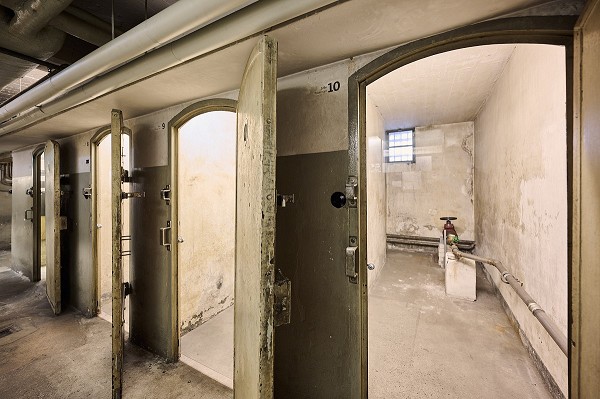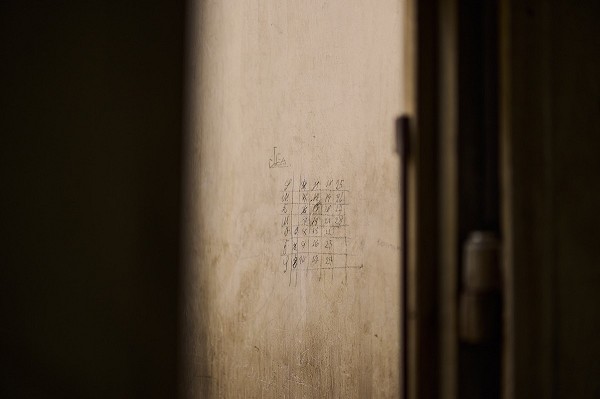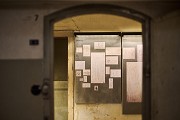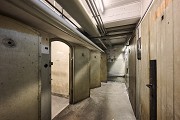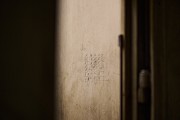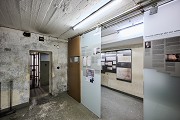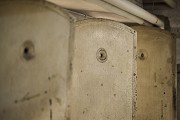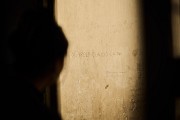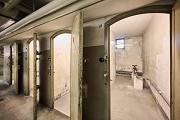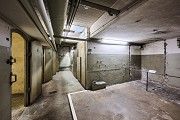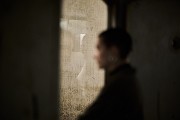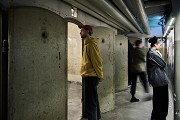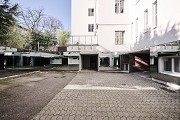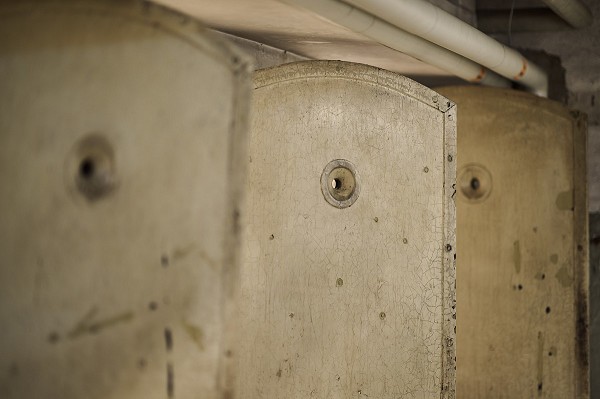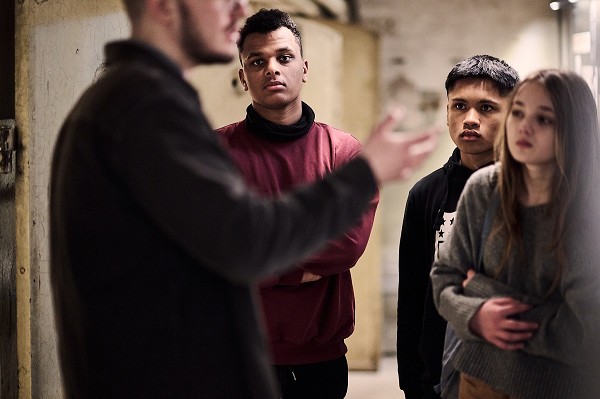The building
The NS-DOK is a contemporary history museum and one of the largest municipal memorials to the victims of National Socialism. It is located in the EL-DE House, the former Gestapo headquarters in Cologne. Here you will find background information on the history of the building and its use by the Gestapo, in particular with regard to the prison in the basement of the building, but also information on its subsequent use from the end of the Second World War to the present day.
The historical site
The NS-Documentation Centre is housed in the EL-DE building. This building, named after its builder, Leopold Dahmen, was the headquarters of the Secret State Police (Geheime Staatspolizei – Gestapo) in Cologne from 1935 until 1945. The building came to epitomise NS terror in Cologne and the Rhineland: Gestapo officers organised systematic surveillance of the population and spread violence and terror from here. The gradual deprivation of rights and deportation of Cologne's Jews to the ghettos and extermination camps were also organised from here. Political opponents of the regime, foreign forced labourers, members of minorities and social outsiders who were considered "inferior" in the racist NS ideology, were brutally interrogated and tortured in the building's prison.
Numerous inscriptions and drawings left by former prisoners have been preserved on the walls of the cells in the basement of the EL-DE building. They bear witness to the brutality of the Gestapo and the inhumane conditions in the prison. At least 400 executions took place in the courtyard from 1944 until the American army liberated Cologne in March 1945.
Unique testimonials: Inscriptions made by the prisoners
During the 1980s, restorers counted 1,800 inscriptions and drawings dating from 1943 to 1945. The prison cells were repainted in 1943 due to bomb damage, which resulted in the older inscriptions being covered. The prisoners wrote messages on the walls using pencils, pieces of chalk, charcoal and lipstick, whilst others scratched their thoughts on the walls using fingernails, iron nails or screws.
The inscriptions testify to the focus of the Gestapo's persecution during the final phase of the Second World War, which was primarily directed against the many foreign forced labourers in Cologne: over a third of the inscriptions are written in Cyrillic, whilst another 230 are written in other foreign languages, mainly in Dutch, French and Polish. The National Socialists had mostly broken any political resistance of the first years of the dictatorship through their brutal actions. Most of the Jewish population had already been deported or had fled.
"Sometimes there were 23 or 24 of us in the cell and then there were six or seven of us. It always cameby momentum. [...] Most of those who were taken out never returned. [...] We slept sitting on the floor: I was the second or third. The next one sat between my legs and the next one between his legs. We sat and slept like that. My head was on the shoulder of the person in front of me. […]“
Hans Weinsheimer
"There was a bucket in the corner of the cell where you could do your business. We emptied the bucket in the mornings and evenings when we went to the toilet. […] Nata [Tulasiewicz] was interrogated in the lower basement three times. After Nata went downstairs, we could hear her screaming. She returned bleeding.”
Stefania Balcerzak
The long road to opening to the public
Although the EL-DE building is in the city centre of Cologne, it survived the war almost undamaged, whereas most of the surrounding buildings were destroyed in bombing raids. Municipal offices moved into the building after 1945. The prison cells in the basement were used for storing files. It was not uncommon for people who had been interrogated and tortured in the EL-DE building during the NS era to have to go there to get married or to submit their pension applications during the post-war period.
The building's history was ignored and almost forgotten until the 1970s - when protests by the civil society urged the city and the public to come to terms with its past. In 1979 the city council decided to establish a memorial site . However, it was not until 1987 that a documentation centre was founded in this historic building and the permanent exhibition was developed in the 1990s. The institution was gradually expanded regarding space and staffing during the following decades. Since 2019 the EL-DE building has been used exclusively by the NS-Documentation Centre – (and) above all else, thanks to the ongoing civil society’s commitment that got the ball rolling back in the 1970s.
The NS-Documentation Centre today
The building has been a listed building since the early 1980s. Today, the EL-DE building houses a memorial, its permanent exhibition "Cologne under National Socialism" as well as a documentation centre and a library. Every year, the NS-Documentation centre hosts several of its own and external temporary exhibitions and organises events about historical and political issues with a focus on the history of National Socialism.
The centre is dedicated to commemorating the victims of National Socialism, research and educational work. Researching the history of the Jewish population and other persecuted minorities is a central task of the organisation, which has resulted in international contacts we made with survivors and their relatives.
As well as dealing with historical issues, some of our staff also deal with various forms of ongoing discrimination. The department's work focuses on investigating and documenting right-wing extremists’ activities as well as advising and supporting victims of antisemitic attacks.
Finally, since 2023 the NS-Documentation Centre also makes an important contribution to democracy education through its educational programmes, including new learning rooms.


